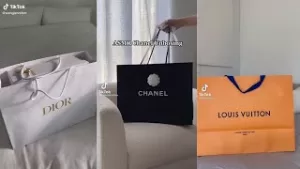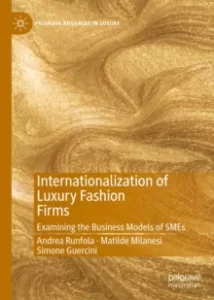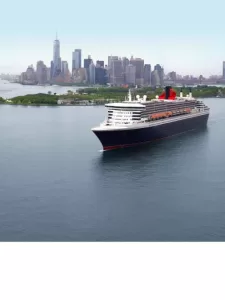
Introduction to Luxury Brand Influence
Understanding the Rise of Luxury Brands in Modern Culture
– **Cultural integration**: Luxury fashion has seamlessly integrated itself into different aspects of modern culture, influencing art, music, and pop culture significantly.
– **Source of Inspiration**: As a source of inspiration, these brands take cues from a broad spectrum of historical, social, and artistic movements, supporting the evolution of creative expression.
– **Self-Expression**: The clothes and accessories produced by luxury brands offer individuals a canvas for self-expression, enabling them to communicate their identities and values.
– **Innovative Influence**: High fashion is synonymous with innovation in textiles, design, and marketing, influencing how we dress, live, and see the world around us.
How Luxury Brands Shape Social and Cultural Norms
– **Awareness and Advocacy**: Through powerful campaigns and collaborations, luxury brands have raised awareness for social issues, from sustainability to human rights, influencing popular conversations.
– **Cultural Respect and Awareness**: By interacting with various cultures and incorporating diverse influences into their designs, these brands promote cultural appreciation and respect.
– **Generation Link**: Fashion acts as a bridge between generations, interpreting and updating historical garments for a contemporary audience, which fosters a connection to heritage.
– **Art Form Recognition**: Luxury fashion is increasingly being recognized as an art form, as it embodies craftsmanship, creative vision, and a deep understanding of aesthetics and materials.
Fashion’s ability to convey personal and collective narratives is unparalleled. Luxury brands, with their history and clout, have a unique position from which they can shape not only what we wear but also how we perceive and interact with the world. Through their innovative designs and influential partnerships, they spark dialogue and usher in new cultural norms, often challenging the status quo and pushing boundaries. They also serve as a means to bring the past into the present, by reinterpreting traditional designs in a context that resonates with contemporary sensibilities.
The interplay between fashion and culture is an ever-evolving dance of influence and change. What luxury brands impart through their presence extends beyond the realm of fashion and infiltrates the zeitgeist, impacting music, visual arts, film, and more. It is this interaction with the broader spectrum of culture that amplifies their relevance and sustains their position at the forefront of innovation and social commentary. In a sense, fashion becomes a living chronicle of our time, captured in the fabric and stitches of the clothes that define the eras.
The Intersection of Streetwear and Luxury Fashion
The Cultural Shift: Luxury Brands Embracing Streetwear Aesthetics
Luxury fashion’s influence on culture is undeniable. As I reflect on the way brands and designers have shaped the art, music, and pop culture landscapes, I see patterns of mutual inspiration and influence:
– **Influence on Music**: Luxury brands tend to craft bespoke clothing and accessories for top artists. These pieces often become iconic, defining a musician’s image and often a particular era of music.
– **Celebrity Endorsements**: When celebrities wear these luxury items, they can catapult a brand into a trendsetting position. Fans and fashion enthusiasts take notice, seeking to emulate their style icons.
– **Pop Culture Integration**: Fashion references are rife in pop culture, from music videos to blockbuster films. Luxury brands have been woven into the fabric of storytelling, representing particular lifestyles or character traits.
– **Artistic Collaboration**: Art and fashion continuously intersect, with designers taking inspiration from contemporary art movements to create pieces that stand at the intersection of both worlds.
The decision to mix luxury fashion with streetwear aesthetics marks a pivotal change. These brands, once considered exclusive and out of reach, now adopt the raw, authentic vibe of streetwear, attracting a younger demographic and affecting the entire fashion ecosystem.
Economic Impact of the Luxury-Streetwear Fusion
The luxury-streetwear fusion has not only altered cultural dynamics but has also made significant ripples in the economy of fashion:
– **Increased Reach**: By embracing streetwear, luxury brands have expanded their market reach, now appealing to millennials and Gen Z consumers who prioritize authenticity and relatability.
– **Collaborative Collections**: Limited-edition collaborations between high-end designers and streetwear labels create hype, driving demand and secondary market sales that can surpass original retail prices.
– **Social Media Influence**: The partnership between luxury and streetwear is heavily promoted on social media, where influencers can sway market trends, boosting sales and brand visibility.
In summary, the bond between luxury fashion and pop culture is complex and continually evolving. Luxury brands wield substantial cultural influence, shaping how art, music, and entertainment are both perceived and consumed. They have now adopted elements of streetwear, creating a new fashion hybrid that resonates with contemporary audiences and leaves a lasting impact on our cultural landscape.
The Role of the Internet and Pop Culture
Luxury Brands in the Age of the Internet
The proliferation of the internet has radically transformed how luxury fashion brands interact with consumers and influence culture at large. As a keen observer of these trends, I’ve pinpointed several factors that define this modern digital landscape:
– **Online Exclusivity**: Luxury brands have leveraged the internet to offer exclusive online releases and limited-time offers, creating a sense of urgency and prestige around their products.
– **Digital Fashion Shows**: In recent times, fashion shows have become digital spectacles, reaching audiences beyond the elite few who attended physical events. This makes high fashion more accessible and influential across different societal strata.
– **E-Commerce Growth**: The rise of e-commerce platforms allows consumers easy access to luxury items. The convenience and breadth of selection have led to an increase in the consumption of luxury goods globally.
– **Interactive Marketing**: Through interactive campaigns and social media engagement, luxury brands can create immersive experiences, forging stronger emotional connections with consumers.
These internet-driven approaches are changing the relationship between luxury brands and their clientele, democratizing luxury to an extent and heightening its cultural cachet by making it more visible and widely discussed.
How Pop Culture Propels Luxury Brands to Youth Audiences
In dissecting the links between pop culture and luxury fashion, it becomes clear that the former serves as a propulsion system for the latter, especially regarding the younger demographic:
– **Celebrity Influence**: Young stars and influencers often set trends after being spotted in luxury pieces. The rapid dissemination of these images across social media platforms sparks interest among the youth, who aspire to emulate these styles.
– **Music Video Product Placement**: Integrating luxury brands into music videos is a strategic way of advertising that embeds these products within the context of popular culture, making them more appealing to younger viewers.
– **Festival Sponsorships**: By sponsoring music festivals and cultural events that attract younger crowds, luxury brands cultivate an image of hipness and relevance.
– **Youth-Centric Collaborations**: Teaming up with artists and public figures who resonate with the youth ensures that luxury brands maintain a fresh image and appeal to upcoming generations.
As a result, luxury fashion finds itself enmeshed in the everyday fabric of youth culture, significantly impacting how young people perceive style, social status, and even their own identities. This cultural interplay confirms that fashion is not just about clothing – it’s a form of social and artistic expression that echoes through every aspect of pop culture.
The Psychological Impact of Luxury Brands
Luxury Goods and Self-Perception
I’ve come to observe that luxury fashion goes beyond materialistic indulgence; it’s intricately linked to our sense of self and personal identity. Toting a high-end designer handbag or sporting a signature luxury watch, for instance, can significantly alter not just how others perceive us, but also how we perceive ourselves. Psychologically, these items can:
– **Boost Self-Confidence**: Enveloping oneself in luxury brands can generate a sense of pride and self-assurance. The exclusive nature of such goods can make individuals feel more successful and esteemed.
– **Symbol of Status**: Luxury goods often act as a symbol of one’s status and achievements. They can be seen as a marker of one’s progress and serve as a badge of prestige within social circles.
– **Personal Identity Affirmation**: People may choose luxury brands that reflect their personality traits or aspirational self, using fashion to communicate their identity to the world without speaking a word.
Influence on Consumer Behavior and Identity
Luxury brands not only impact self-perception, but they also shape consumer behavior and construct societal norms of identity:
– **Desire for Exclusivity**: The allure of luxury brands can influence buying behavior, driving consumers to procure unique pieces that not many people can own, thus feeding into the desire for exclusivity and distinction.
– **Pursuit of Authenticity**: Contradictory as it may seem, in chasing branded luxury goods, consumers are often in pursuit of authenticity. They want the true craftsmanship, history, and the story that comes with the brand.
– **Social Signaling**: Consumers use luxury goods as a form of social signaling, conveying their taste, financial status, and even values. This has profound implications on social interactions and people’s placement within social hierarchies.
– **Identity Shaping**: Over time, brand loyalty can become part of someone’s identity. A person might become known for their devotion to a certain label, with the brand’s prestige translating into their own personal identity.
Through extensive observation, it is clear that luxury fashion brands profoundly influence our psychological makeup and social conduct. They are deeply interwoven with notions of self-worth, identity, status, and communal belonging, continuously informing and reshaping the way we interact with the world around us. This intricate relationship between individuals and luxury fashion is a testament to the power these brands hold beyond the tangible products they create.
Luxury Brands as Cultural Capital
Defining Cultural Capital in the Context of Luxury
In my exploration of the relationship between luxury brands and cultural capital, I have come to understand that these fashion powerhouses are more than just purveyors of coveted items – they are arbiters of taste and sophistication. Cultural capital, in this context, refers to the non-financial social assets that promote social mobility. These assets include but are not limited to:
– **Education**: Embracing the history and artisanship behind luxury brands can be seen as a form of self-education about the finer things in life.
– **Intellectual Engagement**: Engaging in the narratives and philosophies endorsed by luxury brands can stimulate intellectual discourse and reflection.
– **Aesthetic Choices**: The decision to purchase and wear specific luxury items often reflects a nuanced understanding of aesthetic trends and sensibilities.
As I delve deeper into this notion, it becomes evident that ownership of luxury goods facilitates entrance into certain social strata that value these symbols of cultural sophistication.
Luxury Brands and Their Contribution to Cultural Equity
Luxury fashion brands contribute to cultural equity in ways that are not immediately apparent. Through endorsement and collaboration with artists, musicians, and cultural icons, they:
– **Elevate Artistic Works**: Luxury brands often work in tandem with artists, helping to bring their works into the limelight and facilitate appreciation by a broader audience.
– **Inspire Creative Industries**: The music and film industries draw inspiration from the aesthetics and ideologies of luxury fashion, shaping artistic expression and pop culture narratives.
– **Amplify Cultural Movements**: Brands can use their influence to spotlight cultural movements, lending them a voice and a stage on the global platform.
My observation of these dynamics reveals a mutualistic relationship where culture and luxury fashion amplify and reimagine each other. It’s a cyclical exchange: as brands become instrumental in shaping culture, culture, in turn, underpins the relevance and resonance of the brands.
As I reflect on the cultural significance of luxury fashion, it’s clear that these brands have a profound effect on the arts. They are not static emblems of wealth but dynamic players in cultural discourse, shaping the zeitgeist and evolving with the times. Luxury brands stand at the crossroads of commerce and culture, wielding their influence to redefine both sectors. This interplay between fashion and culture reaffirms the notion that luxury is not only about acquisition but also about participation in a dialogue that spans generations and geographies, reflecting a world that continues to cherish the rich tapestry of human creativity and expression.
Marketing Strategies of Luxury Brands
Innovative Marketing in the Digital Era for Luxury Brands
In my exploration of the fashion industry, I’ve seen luxury brands evolve in their approach to marketing, particularly in leveraging the boundless potential of the digital world. Incorporating cutting-edge technology and online platforms, they have crafted captivating campaigns that resonate with a global audience. Their strategies often include:
– **Creating Immersive Online Experiences**: Providing virtual store tours, augmented reality (AR) to try on products, and interactive online events, luxury brands enrich the shopping experience from the comfort of home.
– **Leveraging Data Analytics**: Utilizing consumer data, luxury brands fine-tune their marketing efforts, offering personalized recommendations and tailoring their communications to individual preferences and behaviors.
– **Digital Storytelling**: They captivate their audiences by telling the brand’s story, often imbued with heritage and craftsmanship, through engaging content like short films, interviews, and behind-the-scenes glimpses.
Building Brand Desire Through Social Media Influencers and Collaborations
The impact of influencer culture on the success of luxury brands can’t be overstated. I’ve observed that:
– **Partnering with Influencers**: Collaborations with high-profile personalities and digital creators expands a brand’s reach, leveraging the influencers’ followers to gain greater visibility.
– **Exclusive Collaborations**: Limited edition partnerships with other iconic brands or artists grab attention rapidly, creating hype and instilling a fear of missing out (FOMO) among consumers.
– **Social Media Storytelling**: By crafting narrative posts and compelling visuals on platforms like Instagram, Twitter, and TikTok, these brands connect with audiences on a personal level, fostering emotional engagement.
These luxury fashion brands’ marketing strategies effectively transform consumers into brand ambassadors, promoting an organic spread of their influence. As a spectator and sometimes a participant in this cultural phenomenon, I can assert that these approaches not only drive sales but also fortify the brand’s position in the cultural zeitgeist. Luxury fashion houses become intertwined with lifestyle and identity, showcasing their prowess not only in fashion but in masterful marketing that appeals to our modern digital sensibilities.
Economic Contributions of Luxury Brands
The Financial Dynamics of High-End Fashion Markets
In dissecting the economic landscape, it’s apparent that luxury brands play a pivotal role. I’ve noted that:
– **High Profit Margins**: Luxury items, with their premium prices, bring in considerably higher profit margins compared to mass-market goods. The quality, craftsmanship, and brand heritage justify the elevated price points.
– **Job Creation**: The production and distribution of luxury goods provide significant employment opportunities, from artisans and designers to sales and marketing professionals.
– **Tourism Boost**: Major fashion capitals like Paris, Milan, New York, and London often see tourist influxes with people wanting to experience shopping at flagship stores, contributing to the local economy.
– **Secondary Market**: Luxury goods have a robust resale market which not only preserves the value of goods but also makes luxury more accessible to a broader audience.
From my observations, these dynamics suggest that luxury brands aren’t just about selling products—they are about maintaining economic ecosystems that ripple outward, affecting various sectors of the global economy.
Luxury Branding and the Promise of Exclusivity
The allure of luxury brands hinges on their promise of exclusivity. My analysis reveals that:
– **Limited Edition Releases**: Luxury houses often release limited edition products, which creates a sense of urgency and exclusivity that can drive up demand and foster brand loyalty.
– **Personalization Services**: Offering bespoke customization options allows consumers to feel a personal connection to the brand, enhancing the perceived exclusivity of the product.
– **Selective Distribution**: By controlling where products are sold, luxury brands maintain a prestigious image, making the act of purchasing feel like an exclusive experience.
The effectiveness of these strategies reveals a nuanced understanding of market psychology. Luxury brands don’t just sell products; they sell dreams and aspirations. Part of my appreciation for the industry comes from witnessing how brands translate intangible values into tangible economic success.
In essence, luxury fashion’s cultural impact is matched by its considerable influence on the economy. In charting the course of these brands, one sees a complex interplay of artistic expression, cultural resonance, and economic power—a tapestry woven by visionary designers and perpetuated by the strategic moves of industry heavyweights.
Ethical Considerations and Luxury Brand Responsibility
Sustainability and Ethical Manufacturing in Luxury Fashion
As I delve further into the cultural and ethical dynamics of luxury fashion, I acknowledge the movement toward sustainability and ethical manufacturing practices―a vital transition in today’s environmentally conscious landscape. Here are some of the strides I’ve noticed within the industry:
– **Embracing Sustainable Materials**: More luxury brands are sourcing eco-friendly materials, reducing the environmental impact of production and offering consumers the option to make ethical purchases.
– **Transparency in Supply Chains**: Companies are increasingly disclosing the origins of their products, allowing buyers to trace the lifecycle of each item and ensure ethical labor practices along the way.
– **Investing in Craftsmanship**: By valuing skilled artisans and traditional practices, luxury brands help to preserve cultural heritage while ensuring high-quality, long-lasting products that defy the throwaway culture.
These efforts not only cater to the evolving demands of a socially aware clientele but also help to safeguard the planet and its people, aligning opulence with a conscience.
Luxury Brands and Their Role in Social Responsibility
Further reflecting on the social ramifications of luxury fashion’s prominence, I recognize the responsibility these brands bear. The steps some are taking to address this are substantial:
– **Championing Diversity and Inclusion**: Luxury brands are increasingly using their influence to promote diversity within their campaigns, challenging industry norms and amplifying underrepresented voices.
– **Supporting Philanthropy**: Many brands align themselves with charitable causes, dedicating a portion of their profits to initiatives that range from education to environmental conservation.
– **Encouraging Cultural Conversations**: By sparking dialogues around pressing social issues, such as gender equality or racial justice, luxury fashion can accelerate cultural shifts and contribute to societal progress.
These efforts demonstrate that luxury brands can be powerful agents for change, offering much more than just aesthetics. They’re situating themselves as culturally and socially impactful institutions, striving to redesign history not only through fashion but also through their embrace of ethical practices and progressive values. They have an opportunity to lead by example, showcasing that luxury and moral responsibility can coexist. As someone who critically observes the interplay between fashion, art, culture, and ethics, I believe the actions of these brands in upholding social and environmental responsibility will continue to shape the landscape of luxury fashion to come.
Cultural Impact of Luxury Fashion
Influence of High-End Brands on Art and Design
In my observations of the cultural tapestry that high-end fashion weaves, the influence of luxury brands on art and design is paramount. I’ve noted that:
– **Collaborations with Artists**: Luxury brands frequently collaborate with artists, birthing unique creations that often become cultural icons.
– **Museum Exhibitions**: Prestigious fashion houses often have their retrospectives showcased in museums, highlighting the intersection of fashion with art.
– **Design Aesthetics in Other Fields**: The distinct design philosophies of luxury brands often permeate other fields, influencing interior design, product design, and more.
These points illustrate how luxury fashion is not confined to the runway but extends its reach into various realms of creativity, challenging and inspiring art and design sectors.
Luxury Fashion’s Symbiotic Relationship with Music and Pop Culture
I cannot overstate the profound synergy between luxury fashion, music, and pop culture. It’s evident in several ways:
– **Fashion Icons in Music**: Many musicians are also fashion icons; their personal style often influences public fashion trends.
– **High Fashion in Music Videos**: The use of high fashion in music videos can shape the visual landscape of pop culture, making certain luxury pieces instantly recognizable.
– **Fashion Statements on Red Carpets**: The red carpet is a stage for fashion statements, and luxury brands often use these events to showcase their artistry and influence pop culture narratives.
The ability of luxury fashion to both shape and reflect the music scene and wider pop culture underlines its pervasive cultural impact.
Impact of Luxury Brands on Consumer Culture and Identity
Luxury fashion also plays a critical role in consumer culture and the construction of identity, as:
– **Symbols of Status and Aspiration**: Luxury brands often serve as symbols of status and aspiration, influencing consumer culture by setting benchmarks for success and taste.
– **Personal Expression and Identity**: Fashion remains a powerful tool for personal expression, with luxury brands offering avenues for individuals to craft their public personas.
– **Cultural Trends and Movements**: Luxury brands frequently contribute to or catalyze broader cultural trends and movements, further reinforcing their status as cultural influencers.
The influence of luxury fashion on consumer culture thus is multifaceted, intertwined with how individuals view themselves and how they are perceived by society.
These explorations have consolidated my understanding that the cultural impact of luxury fashion far surpasses mere materialism. It’s about shared experiences, self-expression, and a reflection of our times. Luxury brands wield the power to inspire innovators, challenge norms, and leave indelible marks on personal and collective identities.
















